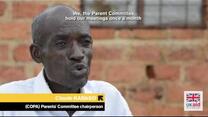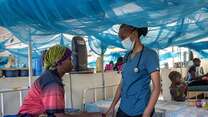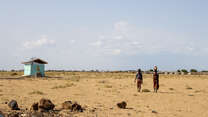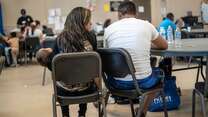The International Rescue Committee (IRC) and its partners implemented a large-scale community-driven reconstruction (CDR) program called Tuungane (“Let’s unite” in the local Kiswahili language) from 2007 to 2016. Funded by the UK Government, this program took place in more than 1,900 conflict-affected communities of the eastern Democratic Republic of Congo (DRC) with a budget of approximately 103.7 million GBP.
Key achievements
- Tuungane staff trained 170,201 community members in the use of Community Scorecards (CSC Process), which is used by community members to rate service delivery. This process fostered dialogue, accountability and improved relations between frontline service providers, local authorities and community members.
- Seventy percent of indicators created by the communities reflected the priorities of local women. Women also occupied 49% of the key positions in the Village Development Committees (VDC).
- Tuungane staff also trained 9,715 Village Development Committee members, 6,271 User Committee Members and 1,029 local government officials (Entités Territoriales Décentralisées) on leadership, the responsible management of development projects and good governance.
- The Tuungane program supported the rehabilitation or construction of 1,448 classrooms, 1,514 WASH facilities (latrines, springs, reservoirs, wells and pumps), 33 market places, 118 health facilities, 495 meters of bridges and 275 km of roads.
How Tuungane supported CDR and improved local governance?
- Preparation phase: During the preparation phase, Tuungane staff introduced the program to administrative and traditional authorities and organized a general assembly for the broader community in each village.
- Project sector selection: Through community consultations which included women’s focus groups, community members prioritized one sector from the areas of health, education, water and sanitation, and infrastructure (roads and markets) for improvement.
- Election of community representatives: Tuungane staff assisted communities in electing representatives to the VDC.
- Joint problem-solving and planning: VDC representatives, existing service user committees and service providers worked together to identify their service deliver problems and developed action plans for addressing them. Seventy-one percent of communities prioritized the health and education sectors for investment. Through a community scorecard process community members accessed information about their rights and entitlements, rated the performance of their schools and health facilities, and worked with frontline service providers to develop a Joint Service Improvement Plan.
- Project implementation and monitoring: VDCs identified contractors and suppliers to implement any identified infrastructure projects and were entrusted with the management of the process in a transparent and accountable way. The VDCs also received support from local authorities to address their service improvement priorities, including training for service user groups such as Parent- Teacher Committees and Health Management Committees.
Strengthening Local Governance
This component built the capacity of twenty decentralized local government entities (ETDs) to deliver services, manage public resources and support local development in a transparent and accountable way. Tuungane staff provided ETD staff and community representatives with extensive training on themes such as participatory planning, financial management, and gender equality. Tuungane staff helped ETD officials facilitate regular meetings with community representatives in order to receive community feedback on how well the ETD fulfills its roles and responsibilities.
Through this component, the Tuungane program strengthened the relationships between local authorities and their constituents, as appointed local authorities prepared for their future role as elected officials, as prescribed in the DRC constitution and legislation.
Village Savings and Loans Associations
Implemented in the province of Maniema, the Village Savings and Loans Association (VSLA) methodology enabled the poorest community members to have greater access to basic services through access to credit and a solidarity fund for household emergencies. Since the vast majority of VSLA members were women, this program component also served as a powerful tool for women’s empowerment and engagement in the CDR process. The Tuungane program established 540 VSLA groups during its second phase.
Research, Evaluation and Learning
All Tuungane phases included rigorous and systematic monitoring, research and evaluation to support IRC’s effort to contribute to the body of evidence on Community Driven Reconstruction (CDR) programming in fragile and conflict affected settings.
In 2007, the IRC partnered with Columbia University to conduct one of the largest CDR program randomized control trial (RCT) to determine the impact of the initial set of program activities of the first phase of Tuungane. While the evaluation found null result for welfare, social cohesion and local governance outcomes, it found that the program was well executed and the community sub-grant reached the intended recipients.
In 2014, the UK Government partnered with the Development Impact Evaluation Unit (DIME) of the World Bank to evaluate the long term impact of the first phase of Tuungane, to identify changes associated with the second phase and to determine the impact of different accountability mechanisms stimulated during the last phase. Results of this extensive follow-up evaluation are expected in 2017.
In addition to monitoring program indicators, Tuungane piloted two participatory monitoring techniques to learn about the social change processes promoted by the program: (i) Most Significant Change and (ii) Outcome Mapping. The narratives of change collected through the Most Significant Change process suggested that the program stimulated changes in the relationships between service users and frontline service providers. Following their participation in Tuungane, community members noted an increase in health and education user committee members’ involvement in the management of health facilities and schools, which they attributed to the community scorecard process.



